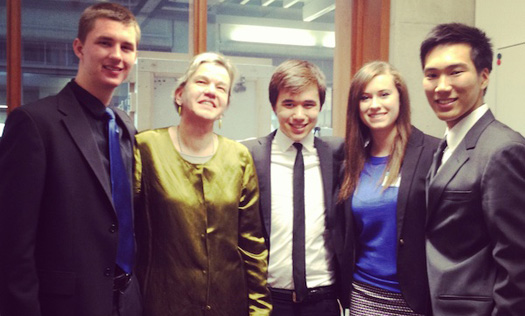by Rachel Talen
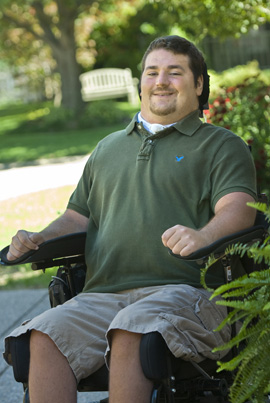 I was very moved to hear that Easter Seals’ 2012 national adult representative Ben Trockman had written a post on his own personal blog on the anniversary of the motocross accident that caused his spinal cord injury. After I read it, I asked if I could excerpt parts of Ben’s post here on the Easter Seals blog. Ben graciously said yes.
I was very moved to hear that Easter Seals’ 2012 national adult representative Ben Trockman had written a post on his own personal blog on the anniversary of the motocross accident that caused his spinal cord injury. After I read it, I asked if I could excerpt parts of Ben’s post here on the Easter Seals blog. Ben graciously said yes.
I was introduced to Ben at Easter Seals Celebration of Giving in San Diego last May and was immediately struck by his positive attitude, not to mention his wit. And his charm! So now I’m one of the lucky ones to call Ben a friend. There’s no doubt his personality is magnetic: he wins over every crowd he speaks to. My grandparents attended the event in San Diego, too and had the honor of meeting Ben. They were so taken by him that they asked me for his photo. One year later, it’s still on their fridge!
I highly recommend you join me in regularly reading Ben’s blog: he is so active that it’s the only way to keep up with him.
In the post about his accident, Ben writes that when he was a teenager, he and his brother rode dirt bikes with their dad just about every weekend. On race weekends, their mom would come too, joining other motocross moms to set up tents, get the food together and eventually help strap up a boot or two.
Ben was 17 years old on March 19, 2006, the day his family traveled together to Poole, Kentucky for a race. “The track at Poole was extremely poorly designed,” Ben wrote. “We as a family had always said we would never race there because of the quality of the track. But, for some reason, that weekend we decided to go ahead and race there.”
Race officials cancelled the race after realizing there weren’t enough racers to fill the track, but after a little lobbying, the officials changed their minds. The race was back on.
Most of the people in the race that day were either family, friends of Ben, or guys Ben knew from previous practices or races. He recalls that “after a little stretching, some warm-up starts, and chugging an energy drink, I competed in my last motocross event.”
Ben doesn’t go into details about the accident, only saying that he was unable to breathe on his own immediately after the wreck. His father performed CPR for nearly 30 minutes before LifeFlight arrived to fly him to Deaconess Hospital in Evansville, Indiana, where it was determined that he’d broken his C1 and C2 vertebrae and suffered a spinal cord injury.
Ben was eventually transferred to the Shepherd Center in Atlanta for three months, and then after a short stint at home he shipped off for three months of rehab at the Kennedy Krieger Institute in Baltimore, where he worked with the same doctor who treated Christopher Reeve. From Ben’s post:
Since the day of my injury, so many things have changed. I’m not that cocky, stubborn 17-year-old boy anymore. I am now a 24-year-old man living with a disability in a much different world than in 2006.
I cannot pop out of bed every single morning and do what I please. It takes somewhere around an hour and a half, and two nurses to get me up. Then, I have to have someone who knows exactly how to take care of me, drive me to where I need to go. Whether I am going to class, where I am now a junior at the University of Southern Indiana, traveling to therapy, or driving to a speaking engagement.
Either way, things just are not as effortless and simple as what they used to be, but I am still living and breathing.
Ben uses his blog post to thank all of the people, friends, family, nurses, therapists and total strangers who helped him along the way. “I would not be here, living my life happily, not living in regret, without the people who have supported me along my travels,” he says, adding that at age 24, he’s accomplished more with his life than he ever imagined before his injury, including his year as a national adult representative for Easter Seals. “During my travels as the local and national representative, I have met some incredible people that are destined to be lifelong friends.”
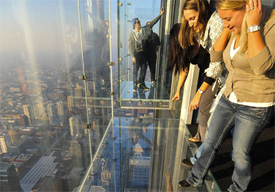 Five years ago Easter Seals Headquarters moved from a smaller office in Chicago’s Loop to the Sears Tower (now called Willis Tower, the tallest building in North America. I’m not always the first to embrace change, and teaching my Seeing Eye dog to thread me through security, find the appropriate turnstile, locate which of the 90 elevators to take upstairs and find our way to our new cubicle was not easy. But hey, five years later, I gotta say: I feel right at home here.
Five years ago Easter Seals Headquarters moved from a smaller office in Chicago’s Loop to the Sears Tower (now called Willis Tower, the tallest building in North America. I’m not always the first to embrace change, and teaching my Seeing Eye dog to thread me through security, find the appropriate turnstile, locate which of the 90 elevators to take upstairs and find our way to our new cubicle was not easy. But hey, five years later, I gotta say: I feel right at home here.






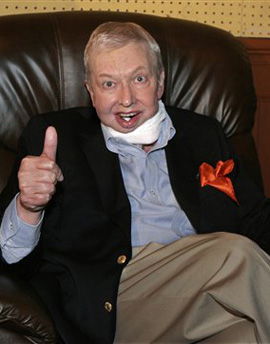 It took a year for me to go from seeing spots to being completely blind. During those twelve months, my husband Mike and I were determined to keep doing all the things we’d enjoyed doing together when I still had 20/20 vision.
It took a year for me to go from seeing spots to being completely blind. During those twelve months, my husband Mike and I were determined to keep doing all the things we’d enjoyed doing together when I still had 20/20 vision.
 I can’t believe it’s already been a year since I wrote a
I can’t believe it’s already been a year since I wrote a 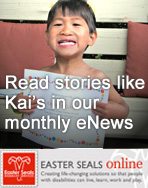
 I was very moved to hear that
I was very moved to hear that 